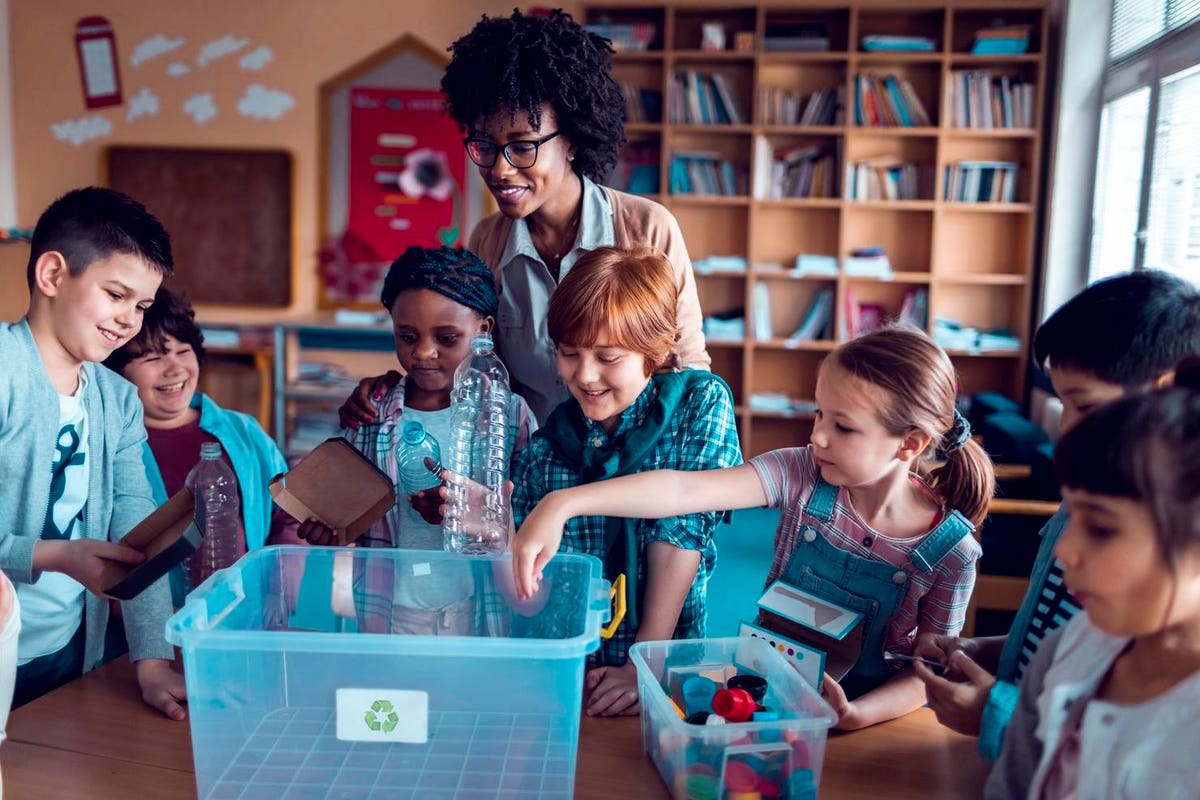Dr. Faisal Alayyan is president and CEO of Higher Colleges of Technology, the UAE’s largest higher ed institute, and a geostrategic expert.
Standing on the precipice of environmental uncertainty, the urgency for action toward sustainability and climate change is heightened by the accelerating climate crisis, as seen in rising global temperatures, melting ice caps and erratic weather. Yet, amid these daunting challenges, hope emerges from global efforts as the world acknowledges its responsibilities and progressively strides toward sustainability.
Various educational initiatives mirror these transformative efforts, championing multifaceted approaches to combat climate change. As an academic, I am inspired and actively involved in this pivotal movement, driven by my concern for the future of our youth and upcoming generations.
Educational Reforms: Cultivating Sustainability
We must acknowledge the critical role of education in promoting sustainability. This cognizance can spur the incorporation of environmental education into the curriculum. Many schools are pioneering in their efforts to instill values of conservation and the appreciation of natural resources among students. Higher education entities, like my very own Higher Colleges of Technology, have reworked not only the curriculum but also the operational practices and organizational culture to adapt to a greener and more sustainable future.
Additionally, in the UAE, I think the adoption of the Education for Sustainable Development (ESD) approach attests to the educational sector’s determination to address environmental preservation and biodiversity protection. By empowering learners to make informed decisions and assume responsible actions, ESD aims to achieve environmental integrity and economic viability.
I have come to believe that charity begins at home, and there is nothing more noble than educating our upcoming generation on the impact of climate change and the active steps we can take to mitigate its negative impacts.
Moving Forward
Our pursuit of a sustainable future requires an integrative approach. An unwavering commitment to sustainable development resonates globally, demonstrating that sustainability is not merely an objective but a collective journey, one demanding shared responsibility, innovative solutions and an unwavering commitment to education and knowledge.
Here are some key takeaways for educational institutes across the globe.
1. Incorporate sustainability education into the curriculum and pedagogy, and align it with national and global goals and standards.
Aligning curriculum with global sustainability goals requires a deep understanding of global standards, such as the UN’s Sustainable Development Goals. This process should be interdisciplinary, engage all stakeholders and foster active learning through real-world applications.
Teacher training is essential, and guidance can be drawn from resources like the UNESCO Education for Sustainable Development framework. A global citizenship perspective and digital literacy, including the environmental impact of technology, should be integrated into the curriculum. Remember, alignment is not a one-time task but a continuous process that adapts to evolving sustainability understanding and standards.
2. Provide opportunities for students to engage in experiential learning.
Consider providing experiences like field trips, projects, internships and community service that foster environmental awareness and action.
To create more experiential learning opportunities for environmental awareness, I suggest leaders first establish partnerships with local organizations and businesses involved in environmental conservation. As I mentioned in my previous article, active industry partnership is perhaps one of the most important strategic goals for any academic institute.
In the UAE, for example, many academic institutes are playing an active part in hosting COP28 later this year. Students are involved in ideas exchanges and active volunteering. I’ve noticed there is a sense of global citizenship and environmental responsibility that is instilled in the community.
3. Equip teachers and staff with the necessary knowledge, skills and resources to effectively teach and promote sustainability education.
Equipping teachers with sustainability education skills requires a multi-faceted approach. This includes conducting professional development workshops that blend theoretical knowledge with practical teaching techniques and fostering collaborative learning communities for idea exchange.
Teachers should be given access to a variety of resources for teaching sustainability and have opportunities for hands-on learning through involvement in local sustainability projects.
At my organization, we believe in lifelong learning, not only for our students but for all members of the community, including our staff and faculty. For this, I’ve found continuous support—including coaching and mentoring—is crucial. Remember that sustainability should be integrated into the existing curriculum, not treated as an “add-on.”
4. Adopt green practices and policies in the campus operations.
Green practices can include reducing energy and water consumption, recycling waste, using renewable energy sources and enhancing green spaces. You can also strive toward a paperless environment with the help of smart digital applications.
For example, at my organization, we’ve made significant strides toward incorporating green practices into our operations. We’ve adopted energy-efficient measures across our campuses to optimize electricity and water usage. And our commitment extends to enhancing our campus environment too. We’ve made a concerted effort to promote the growth of native plant species and maintain green spaces to encourage biodiversity.
We are happy that our ambitions are passed on to our students as well. For instance, one of our successful student startups focuses on improving heat efficiency in 3-D-printed buildings, which could be a game changer within this region.
5. Collaborate.
Collaborate with other education institutes, government agencies, the private sector, civil society and international organizations to share best practices, exchange ideas and create synergies for sustainability education.
Successful collaboration hinges on a shared vision, open communication and clearly defined roles. Networking at sustainability-focused events can help initiate these partnerships, starting with smaller-scale projects to build trust.
Approach potential partners with a genuine understanding of their work and potential mutual benefits. Spend time aligning visions, setting collective goals and understanding each party’s interests. Be flexible and creative in pooling resources and finding funding sources. Proactive, adaptable leadership, underpinned by patience and persistence, can make these collaborations a powerful tool in advancing sustainability education.
Let’s join hands to “heal the world” together.
Forbes Business Council is the foremost growth and networking organization for business owners and leaders. Do I qualify?
Read the full article here





